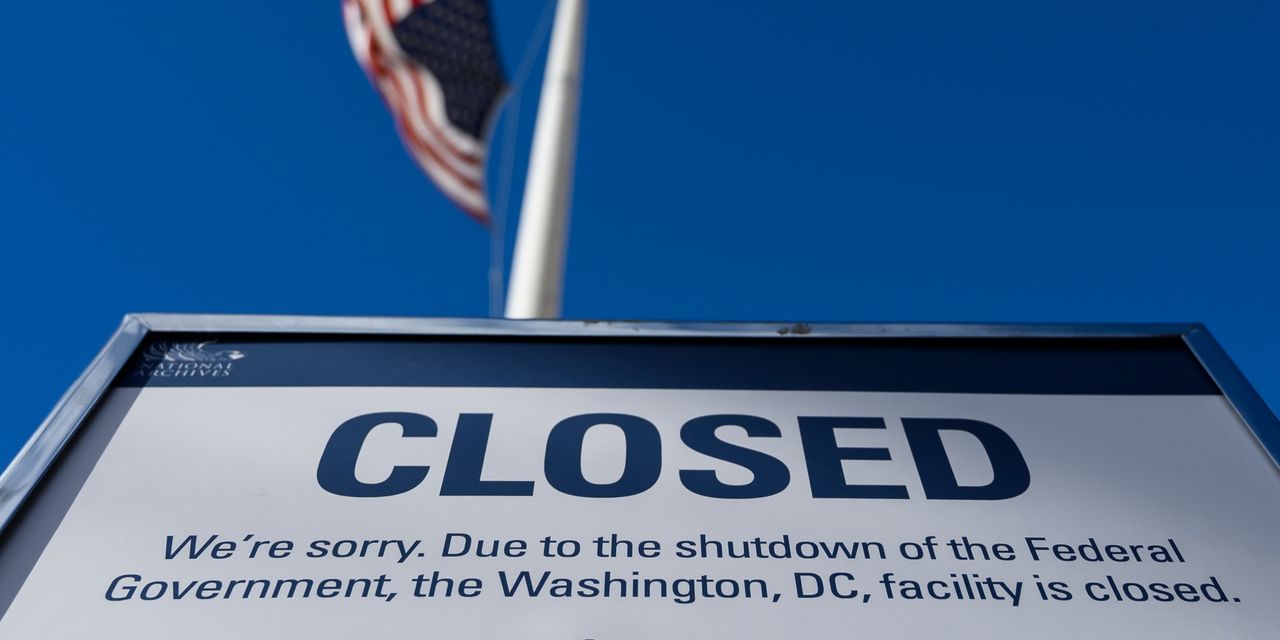Stock market investors need not worry about the impact of a possible U.S. government shutdown in mid-November. That’s the conclusion I reached after analyzing the stock market’s reaction to past government shutdowns.
Since 1981 there have been 10 of these shutdowns, and while that number paints a sorry picture about our political system, it’s large enough to allow some tentative statistical conclusions to be reached. (Shutdowns are a relatively modern occurrence. It wasn’t until a 1981 ruling by the then U.S. Attorney General that a failure to pass a spending bill led to shutdowns.)
Over the month prior to those 10 shutdowns, the stock market on average performed no differently than it did when the government was operating normally. During those shutdowns the stock market in fact performed better than average — though not by enough to satisfy traditional standards of statistical significance.
If a government shutdown were to occur, it would be on Nov. 17, when the money runs out from the stopgap spending measure that Congress passed on Oct. 1. The betting markets currently place one-in-three odds on a shutdown occurring.
To measure whether past shutdowns have had any noticeable impact on the stock market, I focused on a list compiled by the History channel. I measured the stock market’s total return during each of those shutdowns, as well as over the month prior. The averages are summarized in the chart below.
The most recent shutdown occurred in late 2018 and early 2019, and the stock market’s performance at that time then illustrates why other factors have a far bigger impact on stock prices than government shutdowns. That shutdown five years ago began on Dec. 21 and lasted until Jan. 25, during which the Wilshire 5000 total return index gained an impressive 11.2%. Over the month prior to that shutdown, in contrast, the Wilshire 5000 lost almost as much — 8.7%.
This experience superficially suggests that the market reacts poorly in the runup to a shutdown, and then performs well during that shutdown — a case of “sell the rumor, buy the news.”
Yet the true cause of the market’s big drop and subsequent recovery in December 2018 and January 2019 was the Federal Reserve. The U.S. central bank had raised interest rates a number of times in 2018, and the stock market began to decline significantly in September of that year. The last hike in that year’s rate-hike cycle occurred on Dec. 19, 2018, causing the stock market to briefly enter into official bear market territory. Members of the Fed’s interest-rate-setting committee quickly signaled that the Fed would hit the “pause” button, and the market soared.
The lesson for today is that, even if a government shutdown or the threat of one impacts the stock market, other events will play a far more significant role.
Mark Hulbert is a regular contributor to MarketWatch. His Hulbert Ratings tracks investment newsletters that pay a flat fee to be audited. He can be reached at mark@hulbertratings.com
More: As Mike Johnson becomes House speaker, analyst puts risk of government shutdown at 20% to 30%
Also read: How to play the coming January bounce-back for 2023’s stock-market losers
Read the full article here











Leave a Reply